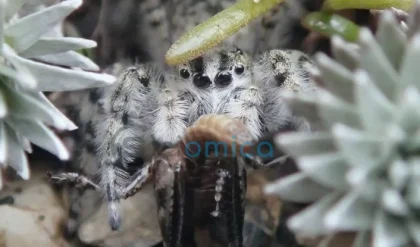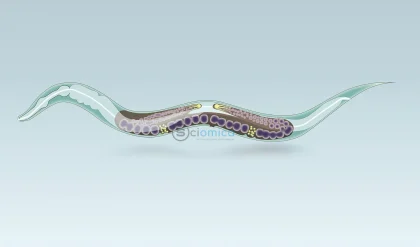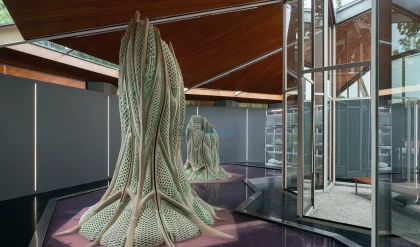
Nematodes, often regarded as the most plentiful animals on Earth, have an intriguing survival strategy when faced with scarcity and competition. Rather than attempting to navigate difficult terrain alone, these microscopic worms capitalize on their social tendencies. When resources dwindle, nematodes come together to form towering structures made up of their kin, creating living towers that rise vertically. This behavior serves a practical purpose: allowing the worms to hitch rides on larger animals to find more favorable environments.
Historically, the phenomenon of nematode towers was considered largely theoretical, with such aggregations rarely observed in nature. Only a few organisms like slime molds, fire ants, and certain spider mites are known to exhibit this type of collective movement. Until recently, no one had documented the formation of nematode towers outside of laboratory conditions, leaving researchers puzzled about their existence and purpose in the wild.
Recent groundbreaking research conducted by the Max Planck Institute of Animal Behavior (MPI-AB) and the University of Konstanz in Germany has brought new insights into this enigmatic behavior. For the first time, scientists have captured video evidence of nematodes forming towers in decaying apples and pears in local orchards, confirming that these structures do occur naturally and function as a means of collective transport.
Serena Ding, the senior author of the study, expressed her excitement upon seeing the first natural towers. The discovery highlighted how curiosity and innovative research methods could unveil aspects of nature previously thought to be mere myth. Ryan Greenway, a member of the research team, dedicated months to exploring decaying fruits, eventually bringing some of the observed towers into the lab for further inspection. The findings were surprising: despite the presence of various nematode species, the towers were composed of a single species predominantly in a larval stage known as “dauer.”
The study underscored that these towers are not merely chaotic piles of worms but rather organized structures behaving as a cohesive entity. Observations revealed that these living towers could synchronize their movements, responding to touch and detaching from surfaces to attach to potential hosts like fruit flies. This discovery suggests a remarkable level of coordination among the nematodes, enabling them to travel collectively to new environments.
To investigate further, the researchers constructed controlled towers using laboratory cultures of the nematode species C. elegans. When placed in a controlled environment devoid of food, these nematodes self-organized into stable towers, capable of maintaining their structure for hours and extending exploratory tendrils into their surroundings. Notably, this behavior was not limited to the dauer larval stage; adult nematodes also engaged in towering, indicating that this behavior might serve as a broader strategy for collective movement.
Despite their sophisticated structural formation, the worms within these towers displayed no discernible role differentiation. All individuals, whether at the top or bottom of the tower, exhibited similar levels of mobility and fertility. This suggests a form of egalitarian cooperation. However, the researchers acknowledge that further studies are necessary to uncover potential variations in role differentiation within natural towers, where genetic diversity might lead to different cooperative strategies.
As researchers continue to unravel the complexities of group behavior in the animal kingdom, these nematode towers could provide valuable insights. Ding emphasized that this study opens a new avenue for understanding collective animal movement, particularly through the lens of genetic research available for C. elegans, positioning it as a robust model for examining ecological and evolutionary dynamics in collective dispersal.
Reference:
- Daniela M. Perez, Ryan Greenway, Thomas Stier, Narcís Font-Massot, Assaf Pertzelan, Siyu Serena Ding. Towering behavior and collective dispersal in Caenorhabditis nematodes. Current Biology, 2025; DOI: 10.1016/j.cub.2025.05.026






